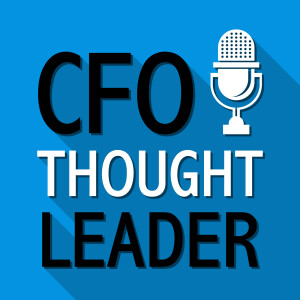
916: Maximizing M&A Speed to Value | Michael Cox, CFO, IRIS Software Group
 2023-07-16
2023-07-16
CFO Michael Cox says that it was near the end of 2022 when the IRIS Software Group began to realize that the guiding philosophy that had motivated and incentivized the UK-based software company to complete 30 acquisitions within 6 years needed an upgrade.
Cox tells us that the IRIS management team was discussing the business cases for yet more acquisitions when the group began to banter about the same deal-making “multiples” that had successfully guided the company prior to the pandemic.
“I was sitting there thinking, ‘Hang on a minute! These multiples would have us potentially spending as much on these businesses as we did pre-COVID—but in fact the cost of debt has doubled,’” recalls Cox, who adds that while IRIS management was certainly aware of the various factors (inflation, a sudden rotation of UK prime ministers, Russia’s war on Ukraine) that had contributed to the UK’s tepid business climate, there was not yet consensus around how to incorporate them and the resulting increased cost of debt into the firm’s business-case decision-making.
In the past, Cox tells us, a typical business-case meeting might have involved a discussion around whether IRIS could continue to invest in an acquired company in order to allow it to achieve new growth—which would make it a worthwhile target. However, it had become clear that such deliberations now needed to consider speed to value as a key contributor to future M&A success.
According to Cox, “We needed to be thinking about how quickly we could generate the value that we wanted to create from these acquisitions.”
While revenue synergies and cross-selling opportunities between IRIS and potential acquisition targets would remain key selling points for any executive advancing the business case for a particular deal, Cox would ask the room to study the prospective acquisition over an 18- to 24-month time span and prod executives for ideas or suggestions.
“I’d ask, ‘How do we generate cross-selling more quickly or invest in this company in a way that makes the business more successful more quickly?,’” remarks Cox, who notes that one trait that might distinguish his post-COVID vs. pre-COVID finance leadership is a willingness to push back.
Says Cox: “Sometimes you’ve got to be that unpopular voice in the room and that sort of glass-half-empty person because it’s important to understand the overall impact of the cost of capital on the value of IRIS as a business.” –Jack Sweeney
More Episodes
Create your
podcast in
minutes
- Full-featured podcast site
- Unlimited storage and bandwidth
- Comprehensive podcast stats
- Distribute to Apple Podcasts, Spotify, and more
- Make money with your podcast
It is Free
- Privacy Policy
- Cookie Policy
- Terms of Use
- Consent Preferences
- Copyright © 2015-2024 Podbean.com






